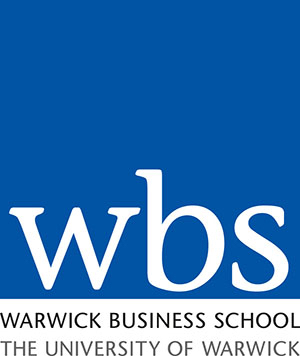- Learning
Distance Learning Reimagined
Warwick Business School’s Dot Powell, Pietro Micheli, and Tim Wray discuss what the past few months have shown about remote learning—what’s effective and how organizations and individuals can benefit
“Openness to change and the idea of being more flexible,” is key to what is taught, says Pietro Micheli, Professor of Business Performance and Innovation at Warwick Business School (WBS). “The idea of keeping some doors open, even though they are not contributing to your business; the idea of having a backup plan, building scenarios. This will be at the core of our programs,” he adds. These were difficult lessons to get across in relatively stable pre-pandemic times, now however, as Micheli notes, “people remember this catastrophic event. We don't need to quote past examples—people understand.”
Openness to change will be of equal importance in the delivery of executive education, and central to this will be greater use of online and remote access. “The lockdown has given us a massive social experiment that has suggested that you can do an awful lot more online than we ever thought possible,” observes Tim Wray, Professor of Practice and Director of Executive Education at WBS. While online and distance learning have been a part of the offering from many business schools, for some years, recent months has resulted in an unprecedented uptick in demand.
Warwick Business School is a pioneer in online executive education, with its Distance Learning MBA ranked the best in the world by the Financial Times, highly experienced delivery capability from in-house platform my.wbs, and an expanding online executive education portfolio.
To provide some context Dot Powell, Director of Teaching and Learning Enhancement at WBS, describes how the school has embraced even greater online delivery in recent months and how, moving forward, its approach is changing. “In the April to July term, just past, we went fully online with all executive programs and our executive MBA. That meant live synchronous delivery—not just people reading material online and reacting—it meant that people had real-time interactions with their tutor, had interactions with each other, did group work, and also picked up some asynchronous recorded content. As much as possible, we tried to mimic what we might have done in a face-to-face environment, but fully online.”
Although the feedback was very positive and this approach really did offer much of the energy and immediacy of the classroom experience, from September onward a new, hybrid approach is being introduced. This will be a mix of both fully online sessions and classroom sessions where some participants will join remotely. As Powell explains, “There are still students who don't feel confident about joining us face-to-face, or they can't physically do it because of restrictions with travel. So, we are now doing ‘consecutive delivery’, where we have a group of students in the classroom and then remote students joining using Microsoft Teams.”
Each of these two methods of online delivery involve significant interaction. The Distance Learning MBA program, of which Micheli is the course director, is more about ‘self-paced’ learning. The Distance Learning MBA, which has been run online since the early 2000s, is delivered 80% online as asynchronous self-paced learning. With a 20% element of taught sessions and social learning delivered face-to-face.
Participants greatly appreciate the face-to-face, residential, part of this course, and while this has been curtailed during the pandemic it will remain a crucial element in future; not least because of the networking opportunities it provides. “A good part of the value of doing an MBA, and to some extent an executive program, is in meeting people and networking,” says Micheli. “However, one thing that we have learned is the fact that we can be even more intentional in our decisions over what is synchronous, what is asynchronous, what is online and what is in presence. The lockdown has given us a much better understanding of how we can use time more wisely.”
There is a sense that, as people and organizations have become increasingly used to communicating via Zoom etc., they will find networking online more acceptable. Not to mention the cost and time saving implied. Wray relates a conversation with an HR director of a large social media company, “When we said, ‘we may never replace the face-to-face piece,’ the response was; ‘Well, I'm not too sure about that.’ He was of the view that almost everything you could do face-to-face, you could do online. I don't think I'd go as far, but in bringing people to campus you do have a price constraint, you've got a time constraint, you've got a location constraint.” The upshot of all this being: things that have worked well online due to the crisis may well stay online in future.
Another perhaps unforeseen boon of increased online, is the ability to personalize executive learning journeys to the needs of individuals. “The platforms we use give us very good data and tracking of people's progress,” notes Powell, “so, we are able to take actions for individual students to help them, to speak to them to find out whether there is an issue, to take remedial action, and to help them progress.”
“The other thing we do is a lot of social learning, which also personalizes the journey. Our platform is built so that when people write a comment it can be replied to, liked, or queried by a colleague. It can also be flagged for the attention of the tutor. We've put a lot of effort into making sure that people don't feel lost in a big group, or just lost in the material online.”
One thing that does not seem to be happening in the executive learning space is the use of virtual world environments and avatars—something predicted in the past. Powell believes this is because anonymization runs counter to personalizing the learning. “People want to be themselves. And, consistent with the networking piece, you want to get to know people as they are, rather than get to know their avatar.” Simulations, however, are used—allowing participants to take on and learn in different roles. Even here though, “it's very clear that these are simulations and that you know who the people are you're working with.”
Looking at the broader picture, one would hope that the increasingly sophisticated online learning that is being developed today would give executive education much greater reach in future. A reach that would allow learning to be offered at deeper levels within organizations than has typically been the case in the past. A wider reach too, exposing different types of organizations—smaller firms and start-up businesses—to the benefits of executive education.
Micheli emphasises that the quality of the product offered will be the key differentiator in this changed landscape. During the pandemic, organizations have been deluged with online materials from consultants, business schools and others. “Now executive programs need to provide something that is more dedicated, is more advanced, and is more specifically related to what participants actually do. The propagation of the basics, I think that's off.”
“It's not about content. It's about the whole relationship side of learning; those relationships with the faculty and with each other, and that personalization that keeps participants on track,” says Powell.
Wray believes there is no doubt an opportunity for the school provided by its developing online expertise and the global reach this provides. “I think the brand of the school is really important in relation to this. As well as creating unique offerings and value propositions in some of the areas where we have very distinctive capability. In behavioural science, for example, an online program with global reach has very significant potential.”
“There is also the opportunity for different kinds of business models. So if, for example, a distance learning program is made available on an open program basis globally, you may have a company ask, ‘Actually, we've got 500 people that we'd like to take through that program.’ What is the opportunity to customise that kind of distance learning product specifically for them and offer it to them on a licenced basis?”
With difficult economic times ahead for all of us, executive education will have a major role to play in helping organizations recover, survive, and thrive. Digitization and greater use of online which were major trends in learning and development before the pandemic lockdown, have been accelerated massively. Developments that might have taken several years have been tried, tested, and proved effective at ‘early adopter’ schools like WBS, and many of the exciting developments outlined here bode well for the way executive learning can be delivered in future.
Warwick Business School is a leading thought-developer and innovator, in the top one per cent of global business schools.
ARTICLES YOU MIGHT LIKE
VIEWPOINT
For Thomas Misslin, transformation rather than training is the aim of executive education at emlyon business school
DEVELOPING LEADERS QUARTERLY MAGAZINE AND WEEKLY BRIEFING EMAILS


































